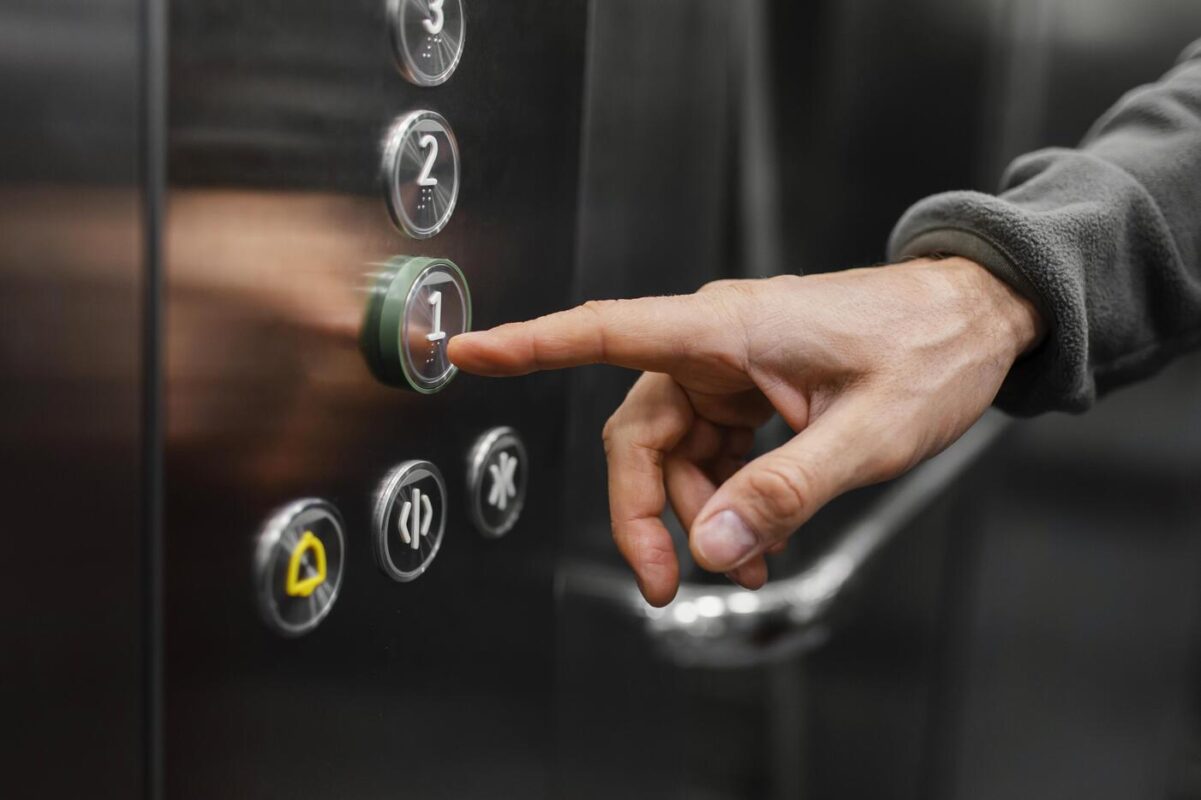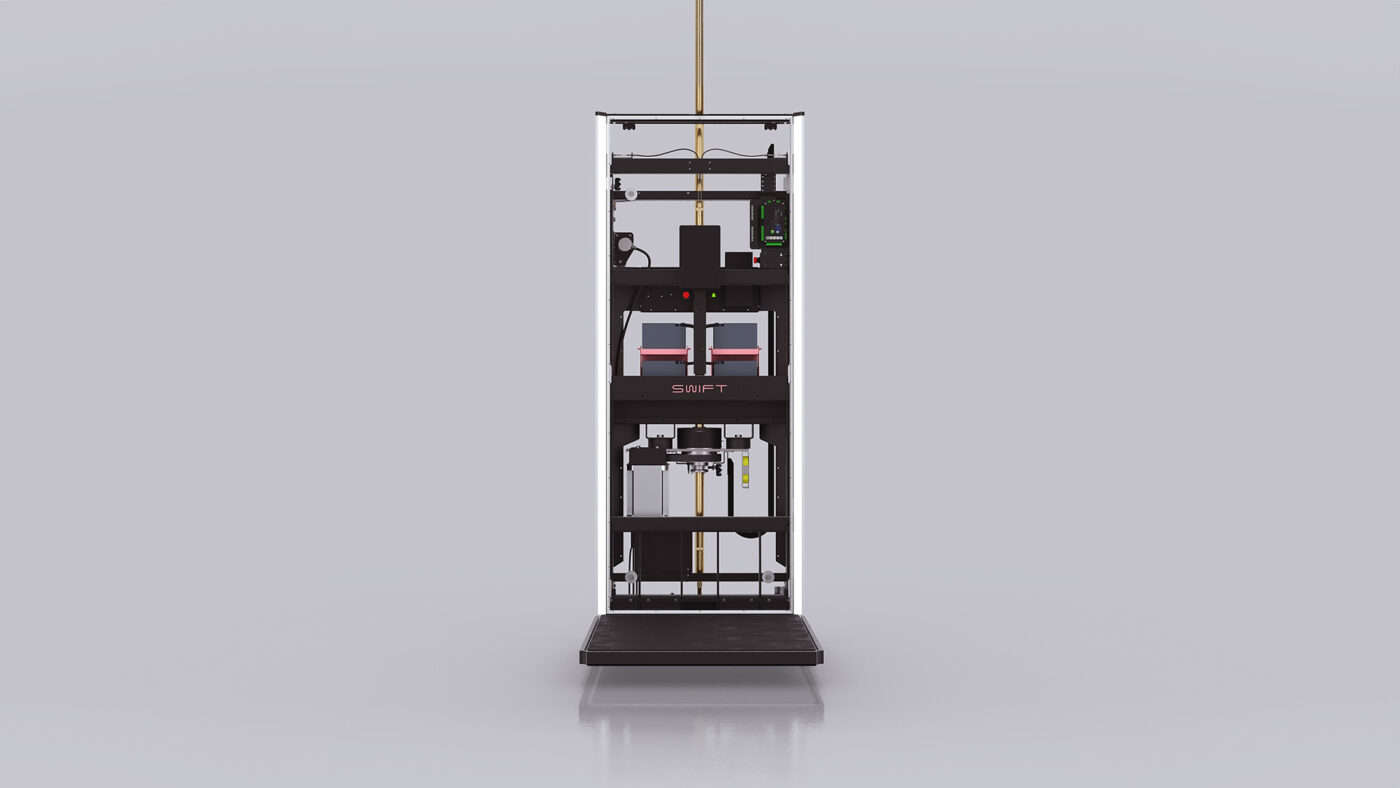
Choosing the right lifts for homes can significantly enhance your living experience, especially for those with mobility issues. In 2025, various home lifts are available, each with unique features, advantages, and drawbacks. This blog will help you understand the different types of home lifts, factors to consider when choosing one, the installation process, and maintenance tips to ensure you make an informed decision.
Types of Home Lifts
Hydraulic Lifts
Description and Mechanism
Hydraulic lifts operate in a cylinder using a hydraulic ram and a fluid-driven piston. When the fluid is pumped into the cylinder, the piston rises, lifting the cab. These lifts are typically installed in a shaft and require a machine room to house the pump and control system.
Pros
- Smooth and quiet operation.
- Capable of carrying heavy loads.
- Ideal for low-rise buildings (up to 5-6 floors).
Cons
- Requires a machine room, taking up additional space.
- Slower than traction lifts.
- Higher maintenance due to hydraulic fluid.
Screw and Nut-Driven Home Lifts
Description and Mechanism
Screw and nut-driven home lifts, such as the SWIFT model, operate using a screw mechanism to raise and lower the lift. A motor drives a nut fixed to the lift to rotate along a drive screw inside the elevator shaft. As the nut turns, it moves up or down along the screw, causing the elevator to ascend or descend accordingly. These lifts are extraordinarily compact and space-efficient, making them ideal for homes with limited space. The system is renowned for its reliability, robustness, and safety, making it popular in residential settings like townhouses or duplex apartments.
Pros
- Perfect for homes with limited space, such as townhouses or duplex apartments.
- Known for its dependable performance and durability.
- Ensures the safety of users with its sturdy mechanism.
- Particularly suited for residential use where space is at a premium.
Cons
- It may operate at a slower speed compared to other lift types.

Traction Lifts
Description and Mechanism
Traction lifts use a system of ropes and counterweights driven by an electric motor. The lift car is moved by traction steel ropes that pass over a sheave attached to the motor.
Pros
- Faster than hydraulic lifts.
- Energy-efficient, especially with regenerative drives.
- Does not require a machine room, saving space.
Cons
- More complex installation.
- Slightly noisier than hydraulic lifts.
- Higher initial cost.
Pneumatic Vacuum Lifts
Description and Mechanism
Pneumatic vacuum lifts operate using air pressure. The cab is moved up and down within a tube by varying air pressure above and below the cab. These lifts do not require cables or counterweights.
Pros
- Space-efficient; does not need a shaft.
- Quick and easy installation.
- Low maintenance.
Cons
- Limited weight capacity.
- Smaller cab size.
- Noisy
- Not suitable for multi-story buildings with high traffic.
Shaftless Lifts
Description and Mechanism
Shaftless lifts are compact, self-contained units that travel between two floors. They do not require a dedicated shaft and can be installed in existing spaces with minimal modifications.
Pros
- Easy installation.
- Cost-effective.
- Ideal for homes with limited space.
Cons
- Limited to two floors.
- Smaller cab size.
- Slower speed.
Platform Lifts
Description and Mechanism
Platform lifts are designed to transport people or wheelchairs between different levels. They can be open or enclosed and are often used for short distances or to overcome a few steps.
Pros
- Wheelchair accessible.
- Versatile installation options.
- Cost-effective for short distances.
Cons
- Slower than other types of lifts.
- Limited to short distances.
- Can be less aesthetically pleasing.

Factors to Consider When Choosing a Home Lift
Space and Structure Requirements
Evaluate the space available in your home for installing a lift. Some lifts, like traction lifts, require more space, while others, like pneumatic vacuum lifts, are more compact.
Budget Considerations
Home lift prices vary widely. Hydraulic and traction lifts are generally more expensive due to their complexity, while shaftless and platform lifts tend to be more affordable.
Aesthetic Preferences
Consider the design and look of the lift. Modern home lifts come in various styles and finishes, allowing you to choose one that complements your home’s interior.
Safety Features
Ensure the lift you choose has essential safety features such as emergency lowering, battery backup, door interlocks, and an alarm system.
Energy Efficiency and Maintenance Needs
When choosing domestic lifts for houses, consider their energy efficiency. Traction lifts, especially those with regenerative drives, are typically more energy-efficient. Maintenance requirements also vary; hydraulic lifts require regular fluid changes, while pneumatic lifts are relatively low maintenance.
Installation Process
Step-by-Step Guide to Installing a Home Lift
Site Assessment: Evaluate the space and structure of your home to determine the best type of lift.
Design and Planning: Work with a lift company to design the lift system that fits your requirements.
Permits and Approvals: Obtain necessary permits and approvals from local authorities.
Preparation: Prepare the site, which may include structural modifications.
Installation: Install the lift, including the shaft, cab, and control systems.
Testing and Inspection: Test the lift to ensure it operates correctly and meets safety standards.
Timeline and Cost Estimates
The installation timeline can vary from a few days to several weeks, depending on the lift type and complexity. Costs can range from $10,000 for basic models to over $50,000 for high-end systems.
Safety Standards and Regulations
Overview of Current Safety Standards for Home Lifts in 2025
Home lifts must comply with various safety standards, such as ASME A17.1/CSA B44 in North America and EN 81 in Europe. These standards cover design, construction, and installation to ensure safe operation.
Maintenance Tips
Regular Inspections: Schedule regular inspections to check for wear and tear.
Keep it Clean: Ensure the lift and surrounding area are clean and free of obstructions.
Follow Manufacturer Guidelines: Adhere to the manufacturer’s maintenance recommendations.
Emergency Preparedness: Know how to operate emergency features and conduct drills.
Upgrade Your Home Living Experience with Swift Lift
Choosing the right lift can transform your home, making it more accessible and enhancing your quality of life. Swift Lift offers a range of elevators for homes, tailored to meet your specific needs. Our expert team ensures a seamless installation and provides ongoing maintenance to keep your lift running smoothly.
FAQs
The cost can range from $10,000 to over $50,000, depending on the type of lift and the complexity of the installation.
Space requirements vary. Traction lifts need more room, while pneumatic and shaftless lifts are more compact.
Yes, modern lifts are equipped with safety features to ensure safe use for all age groups.
Hydraulic lifts use a fluid-driven piston, while traction lifts use ropes and counterweights. Traction lifts are generally faster and more energy-efficient.
Consider space, budget, aesthetic preferences, and specific mobility requirements.
Get In Touch










